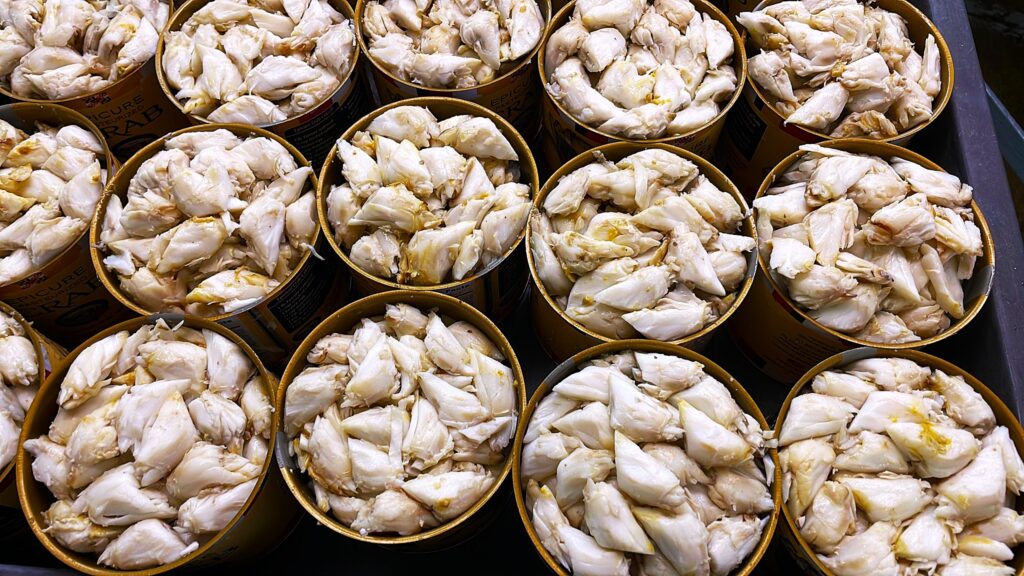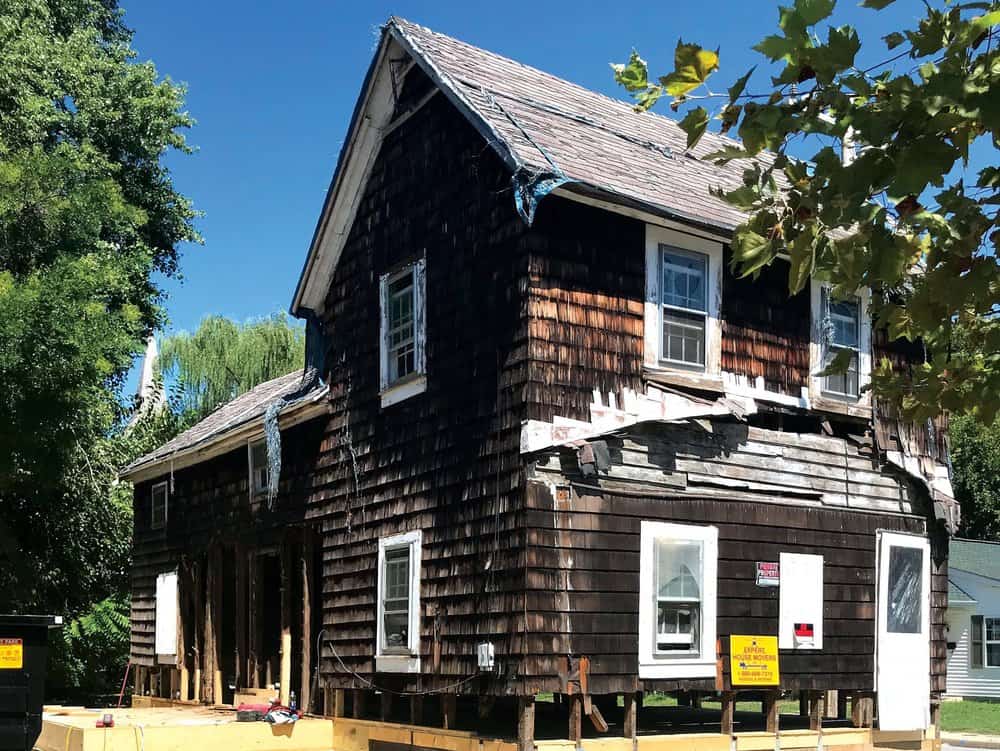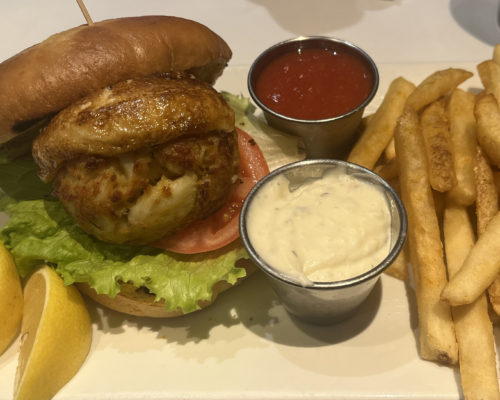Hear this story on WTOP News here:
“We use all local crabmeat,” the server proudly assured the couple sitting at her table in a nice Annapolis restaurant. Then, after checking with the chef, she clarified, “…Well, we actually use a blend of crabmeats. It’s not all local.”
The couple eating in the restaurant that day happened to be Jack Brooks, fourth-generation owner of J.M. Clayton Seafood Company and president of the Chesapeake Bay Seafood Industry Association, and his wife, Diana. Their story is a perfect illustration of the problem with Maryland crab dishes: even for a leader of the industry like Jack Brooks, it’s hard to know when you’re really getting Chesapeake Bay crabmeat.
Sunday, March 9, is National Crabmeat Day (but we’d gladly celebrate it every day). It’s a perfect excuse to take a deeper dive into how the Bay’s prized sweet, white meat ends up on our plate. Chesapeake seafood lovers take pride in ordering local crabcakes, crab soup (both kinds!), crab dip, crab imperial…we could go on. But it turns out we’re not getting local crab nearly as often as we’d imagine.

The statistic is sobering: 95% of crabmeat served in Maryland restaurants is not Maryland crab, according to the Maryland Department of Agriculture (MDA). We were so surprised by the percentage that we asked MDA spokesperson Matthew Scales to repeat himself during our interview.
Scales explains that the reason so few restaurants serve local crabmeat comes down to economics. Fresh (non-pasteurized) crabmeat imported from Venezuela costs only half, sometimes one-third, as much as crabmeat that is caught by Chesapeake Bay watermen and picked in the Bay region. (“Three reasons, price, price, and price,” Brooks quips.) Naturally, many restaurants prefer to pay less and offer more affordable crab dishes on their menus.
Why do Venezuelan crabs cost so little? There isn’t much of a market for them in Venezuela, so up to 95% of their catch and process comes to the U.S. East Coast. They don’t have the ability to pasteurize their bountiful harvest, “so they just have to get rid of it,” Brooks says.
However, Chesapeake Bay crab purists believe that crabmeat from outside the Chesapeake Bay just doesn’t taste as good. Bay crabs develop a unique taste because of the brackish water they live in, and because they build up fat tissue to spend winters dormant, burrowed in the Bay bottom.
As Brooks puts it, “Crabs are like bears. They know they’re going to hibernate [lie dormant] at some point. They build up this fat… their instincts are telling them they need this fat to survive.” That doesn’t happen in tropical areas where temperatures remain above 55/60 degrees, and the crabs stay active. He also points to the bright yellow-orange mustard we see in Maryland crabs as a taste difference-maker.
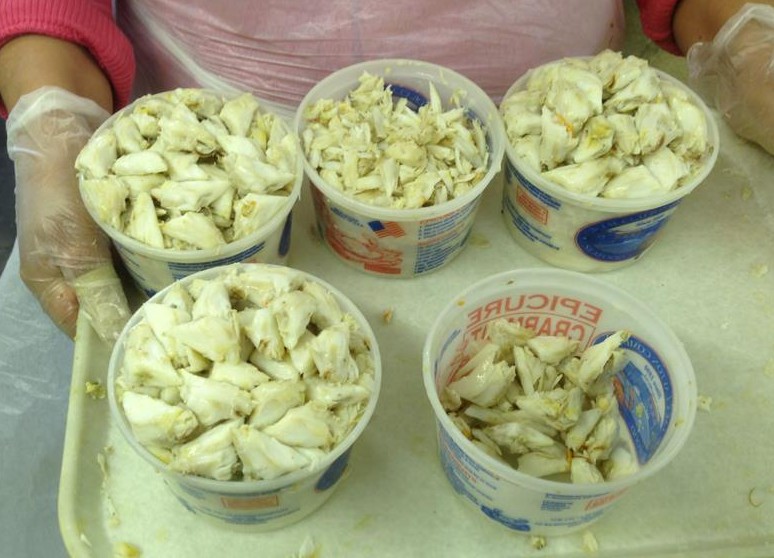
Brooks recalls handing out samples at the largest seafood trade show on the continent, the Seafood Expo North America in Boston. Many of the people who tried samples of his Maryland crabmeat demanded to know what Clayton added to the meat to make it taste so sweet. ‘They said, “You’ve got something in there! No other crab I’ve had tastes like that,'” he recounts.
Not only that, but Maryland packing houses have the sorting of meat down to a science. In fact, the modern crabmeat grading system originated in St. Michaels, at Coulbourne & Jewett Seafood. Clayton, like many packers, offers premium jumbo lump, good for high-end crabcakes and for dishes where presentation is everything, like seafood-topped salads. There is the less-costly regular lump; a mix of 1/3 jumbo and 2/3 regular they call “gourmet lump”; the darker, nuttier-flavored claw meat; and “crab claw fingers”, which leaves the pointy end of the hard claw attached to the meat—always an impressive garnish.
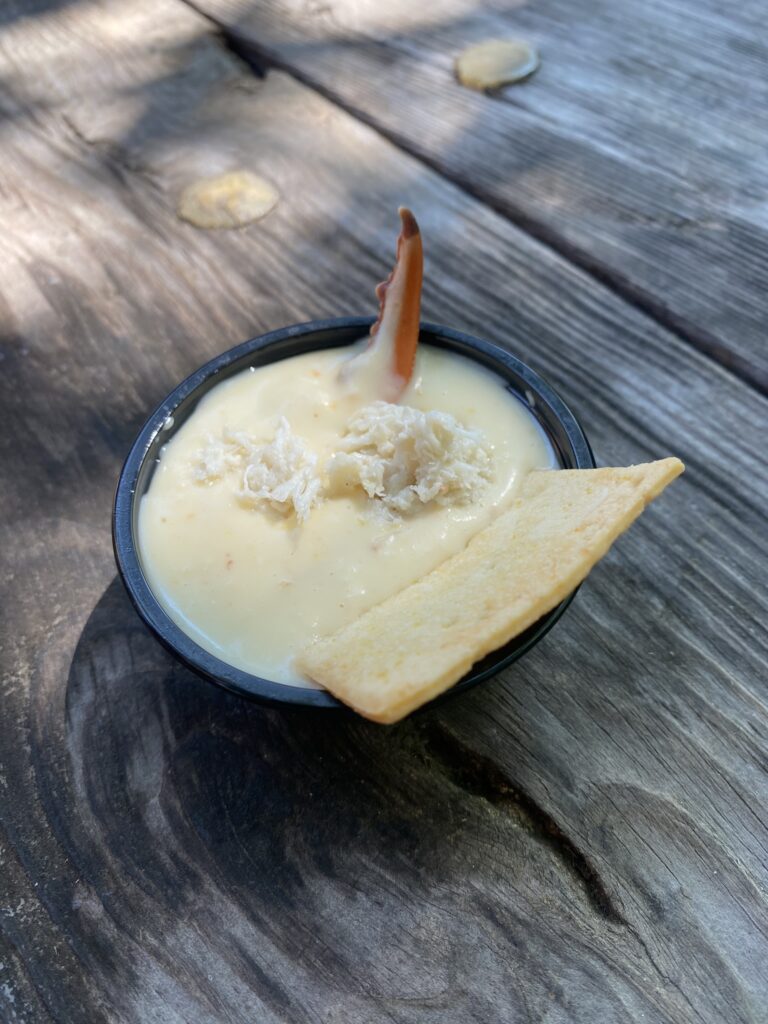
Despite being up against foreign processors with cheaper prices, the local crab industry is still doing brisk business. In 2023, the last year for which numbers are available, Maryland watermen landed an estimated 27,280,000 pounds of blue crab, with a dockside value of $66.7 million. (In Virginia, crab ranks third-highest among seafood harvests, behind menhaden and oysters. In the latest report from 2022, watermen landed more than 16,082,000 pounds of crab for a value of nearly $29 million.)
To help sustain demand in the face of foreign crabmeat, MDA offers programs incentivizing restaurants and markets to use local crabmeat. The state’s True Blue program offers a special certification for those who commit to use at least 75% Maryland crabmeat on their menus. Look for this logo at restaurants and seafood counters:
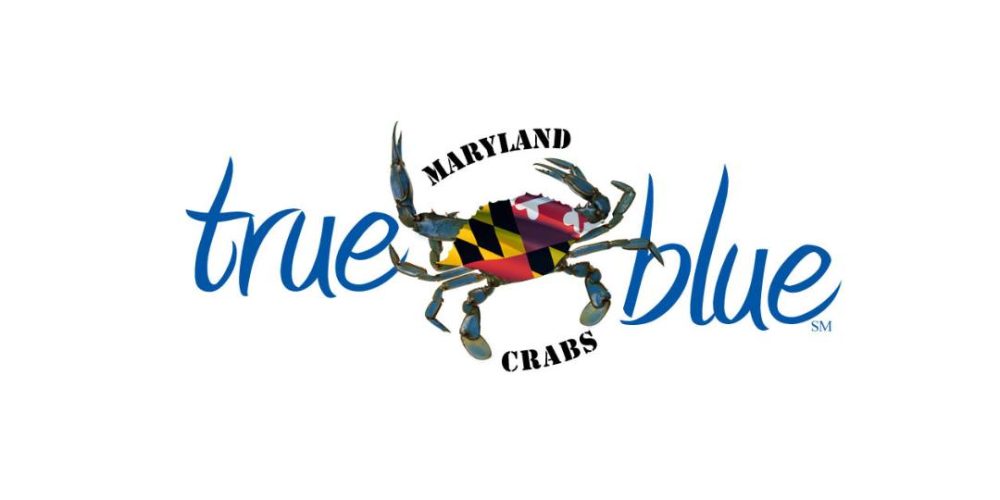
There’s a list of nearly four dozen restaurants and retailers currently participating in the program, and they aren’t all in Maryland. The businesses range from Pennsylvania all the way down to Florida, where even out-of-staters can appreciate the unique taste of Maryland crabmeat.
Several locations of Graul’s Market, a group of independent grocery stores that originated in Baltimore in 1920, participate in the True Blue Program. Jeff Berger, the store manager of Graul’s St. Michaels, says the small grocer goes beyond the threshold of 75% Maryland crab. “We are 100%. I don’t use any meat from Louisiana, the Carolinas, Venezuela… if I can’t get Maryland, I’m just not gonna have it.”
Why is it so important to Berger to be a True Blue carrier? “Anything to support the local crabbers and watermen in the area,” he says. “Plus, we totally feel like Maryland crabmeat is superior to any other. You can’t fake the other stuff… it doesn’t look the same, it doesn’t taste the same.”
Graul’s is known for carrying fresh Maryland crab. “It’s kinda like who we are,” Berger says, surmising that if the market carried anything but local, the customers would be upset: “They expect Maryland crab.”
Berger doesn’t carry pasteurized crabmeat, either. Instead, he puts in a bulk order with his Maryland supplier at the end of the crab season for flash-freezed meat. “It absolutely comes back just as good as when it was just picked,” he tells us.
While businesses like Graul’s remain dedicated to stocking Maryland crabmeat, another state program helps crab processors demonstrate the safety and reliability of their products. Under the voluntary Maryland Crabmeat Quality Assurance and Inspection Program, the University of Maryland Extension inspects plants and tests crabmeat for any harmful bacteria. The program, a partnership between MDA, the Extension, and the Chesapeake Bay Seafood Industry Association, sets participating crab processors apart from the competition. “We want to make sure there’s a competitive advantage [for local crab businesses],” says Scales of MDA.
After all, the appeal of Maryland crabmeat lies in its authenticity. As Brooks points out, “You never see ‘Venezulan crabcakes’ advertised on a menu.”

